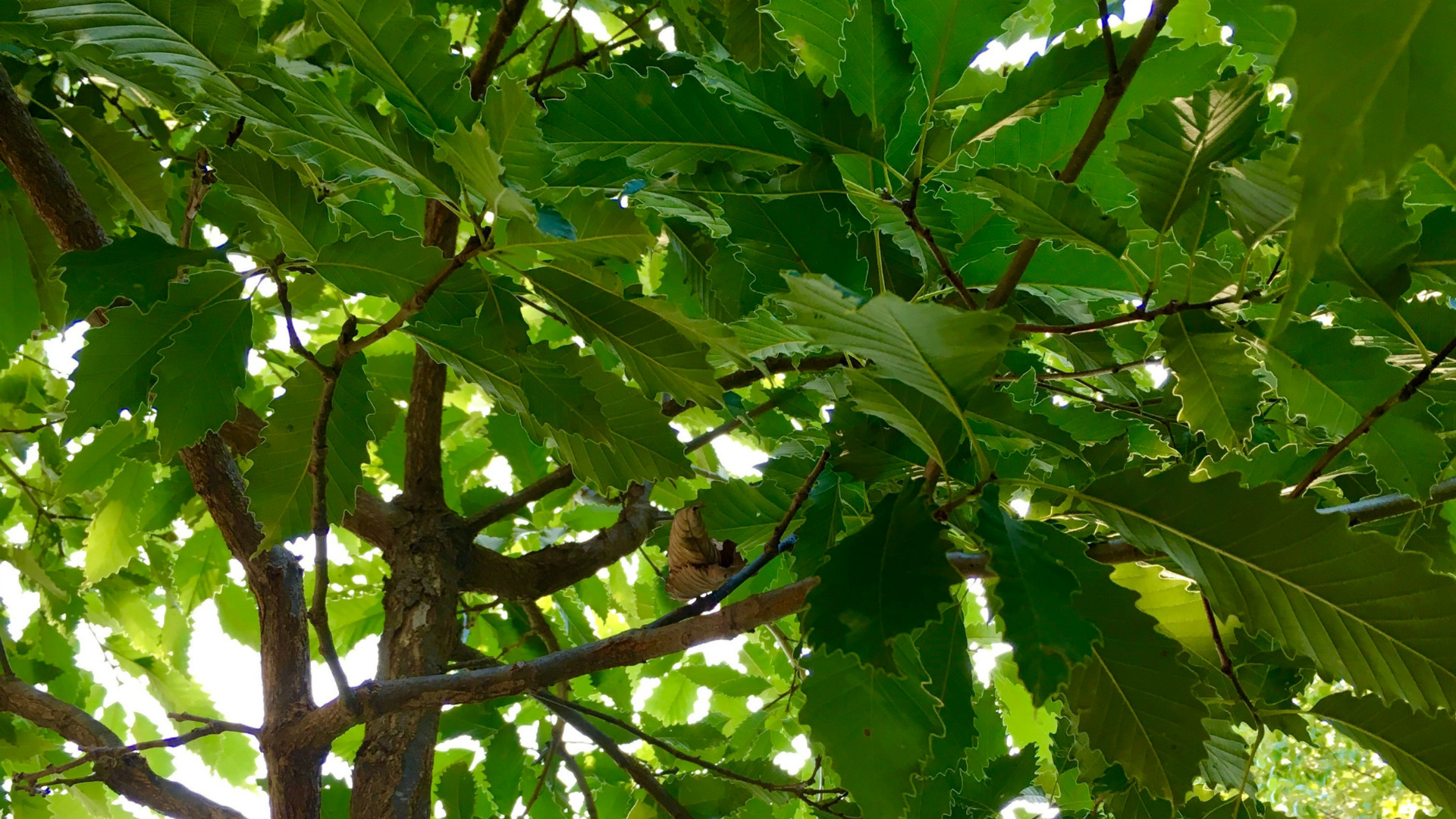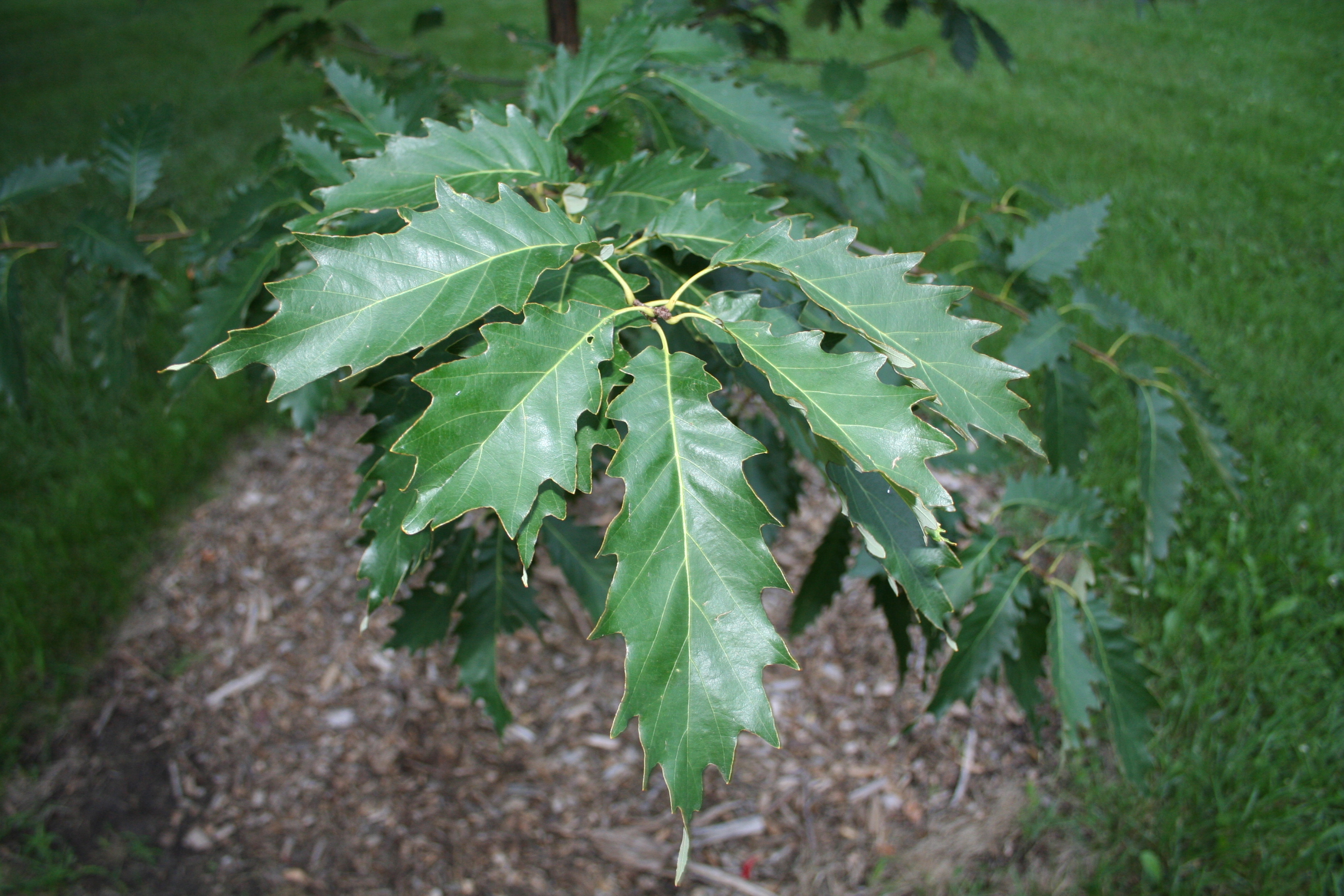chinkapin oak tree facts
New England to northeastern Mexico on limestone outcrops. A medium or large tree reaching a height of 70 feet and a trunk to 3 feet in diameter with a rounded crown of glossy green foliage.

Chinkapin Oak A Tree Of Many Uses Arbor Day Blog
Healthy Top Quality Oak Trees For Sale.
. Chinquapin Oak Quercus muehlenbergii a Wisconsin Special Concern plant is found in oak savannas edges of woods and banks along water. Chinkapin oak is native to the Midwest where it is often found as a specimen planting or as part of a grouping of trees in parks and large areas. Native habitat.
Yes No Tree Description. It grows at a moderate rate when young but slows considerably with age eventually developing into a broad rounded canopy with strong branches. Large tree 80 feet high with narrow crown.
Chinkapin oak is seen at 70 to 90 feet in height when found in the wild but is more often seen at 40 to 50 feet in height with an equal or greater spread when grown in cultivation. Back Print results Print PDF 301 KB. Leaves are alternate simple 48 inches long 13½ inches wide broadest near the base or above the middle ending in a pointed tooth but no bristles or tiny spines on the edges.
Chinkapins are not small trees growing to 80 feet 24 m in the wild and 50 feet 15 m tall when cultivated. This tree is suitable for use in most of Texas including West Texas. Fruiting occurs late May through September.
Distinctively coarsely serrated or wavy like sawteeth along entire margin. A relative of the American chestnut Allegheny chinkapin is a tall native deciduous nut-producing shrub that can be found growing. Chinkapin oak is a medium-sized tall tree often with large low branches and a narrow irregular crown.
It tends to have an open rounded. The acorn is sweet and edible. Chinquapin Oak Quercus muehlengergii is a medium to large tree reaching a height of 70 feet and a trunk that can reach 3 feet in diameter with a rounded crown of glossy green foliage.
Chinkapin grows in droughty and well-drained sites on dry rocky sandy or loamy soils. Because this tree has a diverse range its form varies with location. The dwarf chinkapin oak Quercus prinoides is also known as scrub chestnut oak a small shrub that grows 2 to 10 feet maximum 18 feet with a trunk diameter of 1 to 4 inches maximum 10 feet.
As part of the group of white oaks they bear very pale white bark. Chinkapin oak is named because of the resemblance of the leaves to the Allegheny chinquapin Castanea pumila a relative of American chestnut C. It is sometimes thought of as a weed tree but it may be useful to bind soil along roadsides and rocky slopes.
Shipped with Our Arrive Alive Guarantee. Adapts to many soil conditions. Their trunks can grow to 3 feet 9 m in diameter.
The breadth of the open rounded canopy tends to approximate the height of the tree. If youre interested in planting something on your property that can quickly provide mast attract deer and provide groundcover at the same time its time to consider an alternative to the standard oak tree plantings. Chinquapin Oak Leaf Type.
The chinkapin oak can reach a height of 40 to 50 feet in the landscape and 70 to 80 feet in. This species can be identified year-round. Street tree planting width.
It ranges in elevation from sea level to about 4450 feet. 813 teeth per side. Scattered to common in oak-hickory forests especially on limestone outcrops and in flood plain forests.
Chinkapin occurs in the USDA plant hardiness zones 6 to 10. It has one nut in a burr that opens into two halves which gives the tree a. This is a low maintenance shade tree with a rounded habit.
Chinkapin oaks are found on dry limestone outcrops in the wild and perform well in alkaline soils. Ad Buy Pin Oak Trees Quercus Palustris Online with Delivery Right to Your Doorstep. Grows in a rounded shape.
Quercus muehlenbergii or Chinkapin oak is native to much of the Eastern United States and as far west as Central Kansas and Southwest TexasIn Kansas it occurs mainly on limestone soils rocky riverbanks and usually on higher ground than Bur oakOccurrence and abundance of Chinkapin oak appear to be related to soil reaction and. It is also planted widely as a shade tree suitable for limestone soils. Its glossy coarsely-toothed leaves are yellow-green and small compared to most oaks.
It is tolerant of acid soils pH 55-60 but is not. Chinkapin Oak Quercus muehlenbergii Secondary Names. With full sun and ideal conditions Ozark Chinquapin trees will produce nuts in four years The nuts are so nutritious and sought after by wildlife that they are preferred over white oak acorns.
It occurs in open areas and is tolerant of high heat. Fall color varies from yellow. Chinkapin or chinquapin is a small tree found throughout the southeastern United States.
Features simple oblong to oblong-lanceolate leaves that are dark yellowish green coarsely toothed and 46½ in length. The wood is very rot resistant and trunks of the trees from the 1950s can occasionally still be found. Yields 1 round acorns that mature in the first year.
The narrow coarsely toothed leaves which differ from most oaks look more like chestnut leaves. Attractive shade tree and decent for wildlife food source.

Care For Chinkapin Trees Chinkapin Oak Information And Growing Tips

Chinkapin Oak Tree On The Tree Guide At Arborday Org

Chinkapin Oak Natural Resource Stewardship

Oak Chinkapin Nebraska Forest Service

Chinkapin Oak Tree On The Tree Guide At Arborday Org

Chinkapin Oak Tree On The Tree Guide At Arborday Org
Chinkapin Oak Tree Knowledge Base Lookseek Com
/chinkapin-oak-growing-guide-5202085-hero-349ff2a64aed416d96db090e9c96e6c9.jpg)